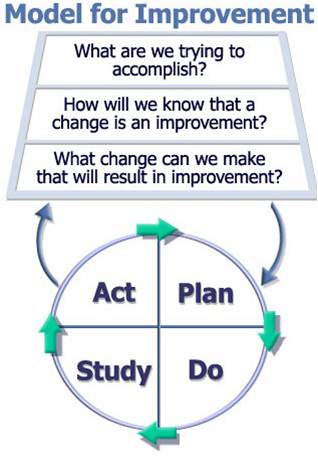Learning Outcomes of Planning for Quality course
Output
By the end of this course participants should be able to;
- Analyse the current system using measurement and mapping tools to identify areas for process improvement.
- Plan and prioritise improvement projects.
- Use measurement for improvement to evaluate changes to the system.
- Plan for sustainability, scale-up and spread. Present an electronic poster of their system and proposed improvements.
Session 1
Aim: To give participants a practical understanding and the necessary tools to create a system based appreciate of their clinical workplace and help identify opportunities for process improvement.
By the end of day 1, participants should be able to;
- Define common improvement terms such as variation, waste, process and system.
- Construct a process map to describe their own workplace and inherent systems.
- Explain how data can be used to coherently describe a clinical system.
- Diagnose in their own clinical system potential variations in process capacibility, potential process waste and opportunities for process improvement.
- Appreciate how to create a team with fundamental knowledge of the clinical system, including the pivotal role of the patient, and motivate them to work on improving frontline processes.
Session 2
Aim: To equip the participants with an understanding of measurement for improvement and how this is integral to using quality improvement tools.
By the end of day 2, participants should be able to;
- Differentiate between measurement for performance, research and improvement.
- Describe outcome, process and balancing measures for an area of improvement.
- Use the model of improvement and project charter in designing an improvement project.
- Construct a driver diagram.
- Use tools to capture patient experience to better understand the current system.
Session 3
Aim: To equip the participants with a knowledge of statistical process control and how this may be applied to understand data to describe their own system, including activity, backlog, capacity and demand.
By the end of day 3, participants should be able to;
- Construct run-charts and control-charts using MS Excel based tool.
- Analyse process capability.
- Develop a costing of the current system and how this would be affected by an improvement project.
- Use the principles of demand, capacity and queue to describe their own system.
Session 4
Aim: To equip the participants to lead an ongoing quality based management of their service.
By the end of day 4, participants should be able to;
- Differentiate the stages of an improvement project - testing, implementation & spread.
- Propose how to sustain improvements.
- Describe how to best work with a team.
- Plan how they will continue to use continuous quality improvement to manage their service.



